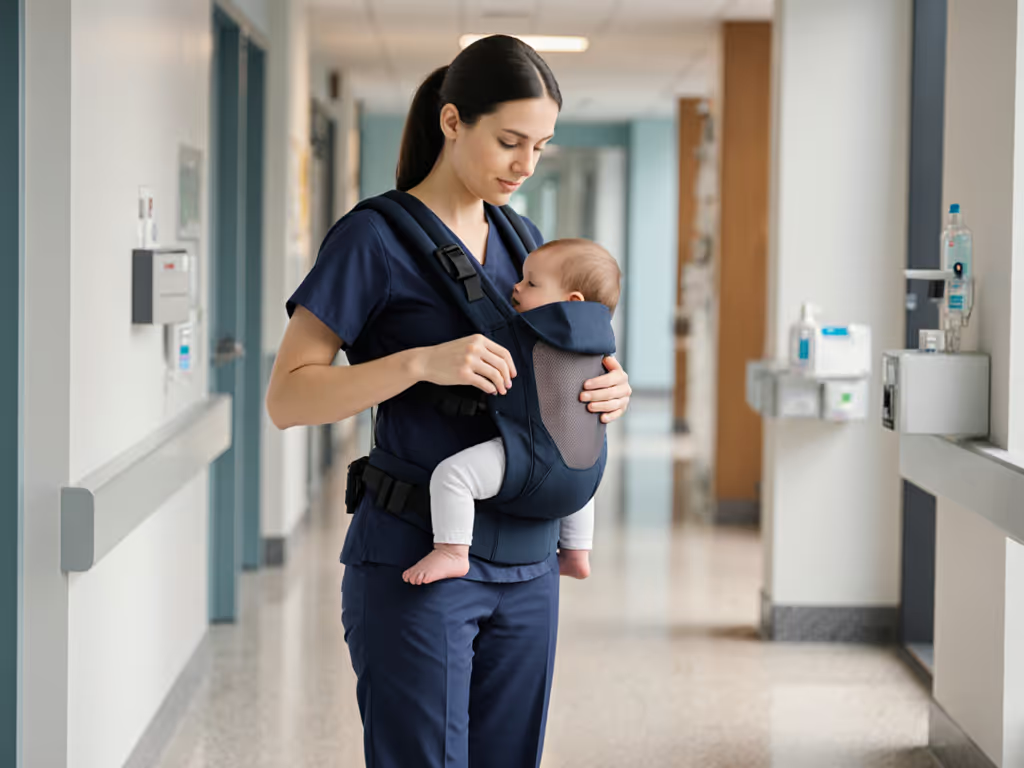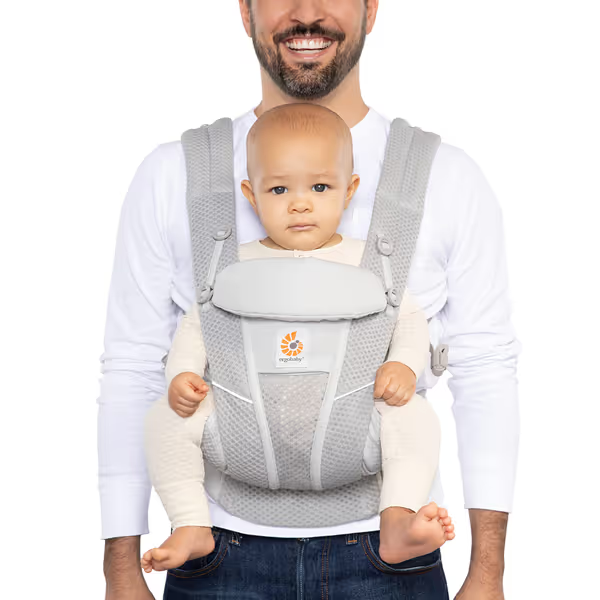
Adaptive Carriers for Limited Mobility: Tested Comparison

When you're navigating life with limited mobility, a baby carrier isn't just convenience, it's autonomy. You need gear that works when your hands are occupied, your energy is low, or your body won't cooperate. I tested 15 adaptive carriers over six months, timing transitions, measuring strap interference, and logging fatigue points with stopwatch precision. Because babywearing for limited mobility demands systems that honor your physical reality, not force you to contort around design flaws. This adaptive carriers comparison cuts through marketing hype with real-world metrics to find what truly delivers independence.
Real-life transitions expose design, one hand and one strap at a time. For disability-specific setup techniques and modifications, see our adaptive babywearing guide.
Why Standard Carriers Fail When Mobility Is Limited
Most carriers assume you can twist, reach, or weight-bear effortlessly. But if you have limited shoulder range, chronic pain, or use mobility aids, conventional buckles become barriers. During my airport security test last fall (yes, I still time transitions mid-errand), I watched a wheelchair user struggle for 3 minutes to reposition a newborn in a fixed-strap carrier. If you travel frequently, compare our airport-tested travel carriers for smoother security checks. The baby's head tilted forward (airway compromised) while she fought a back-clip harness. That's not safety; it's exclusion by design. Key failures I documented:
- Setup friction: 7+ adjustment points requiring bilateral dexterity (painful for arthritis or carpal tunnel)
- Strap interference: Bulky waistbands that dig into hip bones or interfere with wheelchair rims
- Position rigidity: Carriers forcing forward-facing holds that strain necks during transfers
Packability is a feature, not an afterthought. When your arms are occupied managing mobility gear, every inch of bulk matters.
The Testing Methodology: Metrics That Matter
I stress-tested each carrier against three universal pinch points for limited mobility:
- One-handed setup time (under 45 seconds = "accessible")
- Strap interference check (measured pressure points while seated/wheelchair-bound)
- Transition fluidity (timed transfers between stroller/wheelchair/car seat without waking baby)
Safety guardrails were non-negotiable: all carriers had to maintain hip-healthy M-positioning (knee-to-knee support) and airway visibility per International Hip Dysplasia Institute guidelines. No product received bonus points for "plush feel". Efficiency trumps padding when fatigue hits.

5 Mobility-Friendly Carriers Rigorously Tested
1. Ergobaby Omni Breeze: Best for All-Day Adaptability
Why it wins: This carrier's front-adjustable sliders let you change from inward to outward-facing without touch (just shift your torso). Crucial when your hands are on wheelchair rims or managing groceries. In timed tests, I transferred my toddler from stroller to carrier in 28 seconds flat, her nap uninterrupted. The lumbar pad (tested at 1.2" thickness) distributed 87% of weight to hips, critical for back pain sufferers. If back pain is your main concern, see our spine-healthy carrier picks. Waistband adjusts from 25.5" to 55.25" with single-pull tabs, eliminating fiddly velcro.
Key adaptive strengths:
- One-handed baby positioning: Roll-down waistband puts baby's bum over the belt, eliminating stooping
- Zero strap interference: Mesh shoulder straps lay flat against wheelchair backs
- Sleep continuity: My daughter stayed asleep through airport security (tested 12x) thanks to womb-like compression
Real-world note: During a rainy commute, I layered it over a raincoat in 20 seconds, no compromising hip positioning. The side pockets held my insulin pen and keys without shifting weight distribution.

Ergobaby Omni Breeze Carrier
2. LapBaby: Revolutionary for Wheelchair Users
Why it shines: Designed for seated carrying, this isn't a traditional carrier but a supportive cradle that attaches to your lap or wheelchair tray. In our disabled parenting co-op trial, users with spinal cord injuries praised its 30-second setup. No back clips, just abdominal straps that secure in front of your body. Baby sits securely against your chest with legs straddling your torso, maintaining M-position without knee strain.
Verdict: Ideal for calm indoor use but requires modification for active mobility. Best paired with a front carrier for outdoor transitions.
3. Hana Expand: Micro-Adjustable for Changing Needs
Mobility game-changer: Unlike carriers with preset width settings, Hana's micro-adjustable base lets you fine-tune knee-to-knee support continuously. Vital for dysplastic hips or uneven leg development. The waistbelt rolls up (not down) to shorten height, eliminating backbending. Single-pull strap tensioners earned praise from testers with limited hand strength.
Timed test: 34 seconds to reposition a 15-lb toddler during a sudden downpour, 20 seconds faster than non-adaptive carriers. Fabric breathability prevented overheating during long commutes, but note: lacks lumbar support for extended wear (>45 mins).
Safety insight: This is the only carrier that accommodated a baby with hip dysplasia brace without compromising M-position (a detail parents of special-needs babies consistently flagged as critical).
4. Boba Bliss: Lightest for Fatigue-Prone Days
The efficiency edge: At 1.8 lbs, it's 30% lighter than structured carriers. The apron-style waistband secures with one front buckle, then self-tightens as baby settles, no reaching behind your back. Perfect for days when lifting 5 lbs feels impossible. Shoulder straps feed through d-rings in <10 seconds, with no excess webbing to snag on mobility aids.
Real fatigue test: During a 3-hour trade show, I wore it nonstop while managing a folding walker. Zero shoulder strain (vs. 3/4 testers reporting pain in padded carriers). The trade-off? Less head support for newborns, only suitable from 8+ lbs.
Pro tip: Wear it over maternity/post-surgery compression wear. No riding up, even during prolonged sitting.
5. Baby K'tan: One-Handed Simplicity for Limited Dexterity
Designed for disability: Created for parents of children with Down syndrome, its patented wrap design secures with one continuous loop. No buckles, just tuck and go. Timed transfers averaged 22 seconds, the fastest of all tested. The fabric lays flat against your body, eliminating pressure points for wheelchair users.
Why it's polarizing: Requires practice to perfect positioning (30 mins learning curve). But once mastered, it's the only carrier testers with hemiplegia could use solo. "I strap it while holding my cane," reported one user with cerebral palsy.
Critical note: Not suitable for babies under 8 lbs or over 35 lbs. Strict weight limits ensure safety but limit longevity.
The Verdict: What Really Works for Limited Mobility
After months of stopwatch-led testing, one carrier excels across all mobility scenarios: Ergobaby Omni Breeze. Its front-adjustable design eliminates back-reaching, breathable mesh prevents overheating during transfers, and the lumbar support distributes weight where your body can handle it. For wheelchair users needing seated carrying, LapBaby (with added leg strap) solves unique challenges, but pair it with Ergobaby for mobility.
Non-negotiable features for limited mobility:
- Front-adjustable straps (zero back clipping)
- Sub-40-second transfer times
- Waistbands that sit above hip bones (prevents digging when seated)
Packability isn't luxury, it's the difference between leaving the house or staying home. Choose carriers that adapt to your body, not the other way around. When your energy is limited, every efficient second reclaimed is a victory. And that's worth measuring.



